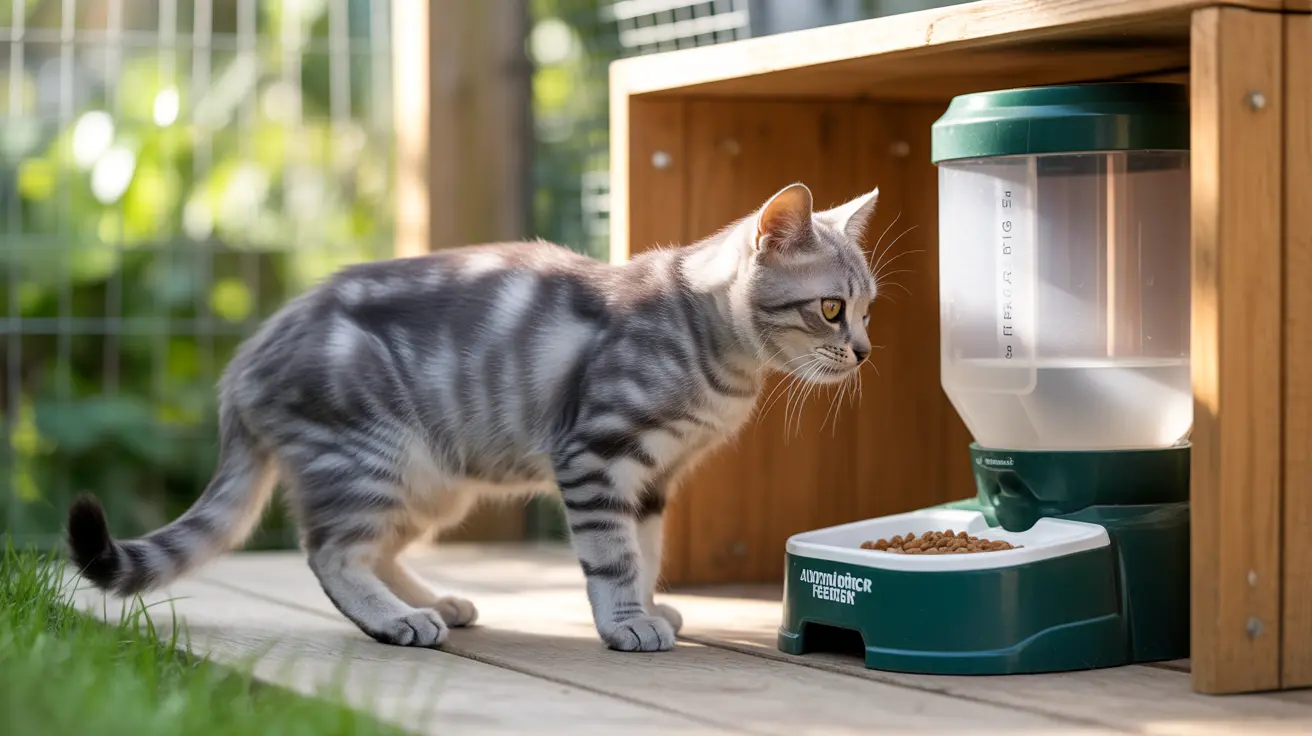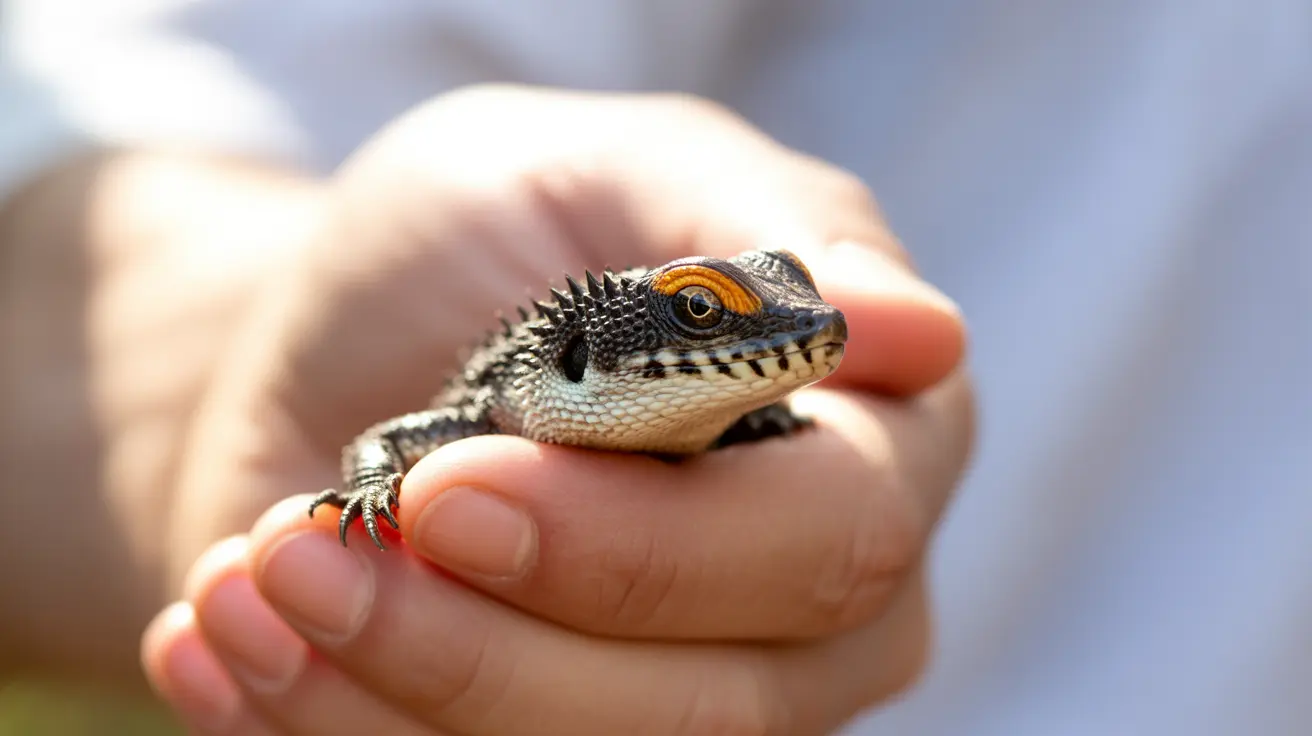How Long Can You Leave a Cat Alone: A Complete Guide for Cat Parents
As a cat parent, you've likely wondered about the limits of your feline friend's independence. While cats are often praised for their self-sufficient nature, the question "how long can you leave a cat alone" is more complex than many pet owners realize. Understanding the delicate balance between your cat's independence and their need for companionship is crucial for maintaining their physical and emotional well-being.
The reality is that cats, despite their reputation for aloofness, are social creatures who form strong bonds with their human families. Leaving them alone for extended periods can lead to separation anxiety, behavioral issues, and even health problems. This comprehensive guide will help you navigate the complexities of cat care when life demands your absence, ensuring your feline companion remains happy, healthy, and secure.
Whether you're a new cat owner adjusting to pet parenthood or an experienced cat parent facing changes in your schedule, understanding the factors that influence how long cats can safely be left alone will help you make informed decisions about your pet's care and well-being.
Understanding Cat Independence vs. Social Needs
While cats are indeed capable of managing many of their basic needs independently, they are far from the solitary creatures many people believe them to be. Cats are social animals that have evolved alongside humans for thousands of years, developing strong emotional bonds with their caregivers. This social nature means that extended isolation can have significant psychological impacts on your feline friend.
The misconception that cats prefer to be alone stems from their hunting instincts and territorial behaviors in the wild. However, domestic cats have adapted to living in human households and often crave interaction, attention, and routine engagement with their families. When left alone for too long, cats can experience loneliness, boredom, and anxiety, which manifest in various behavioral and physical symptoms.
Understanding your individual cat's personality is crucial when determining how long they can be safely left alone. Some cats are naturally more independent and may tolerate longer periods of solitude, while others are particularly affectionate and social, requiring more frequent human interaction to maintain their emotional well-being.
Maximum Time Limits: General Guidelines
The question of how long you can leave a cat alone doesn't have a one-size-fits-all answer, but there are established guidelines based on extensive veterinary research and behavioral studies. For healthy adult cats, the general recommendation is 8 to 12 hours maximum. This timeframe allows cats to maintain their routine while ensuring they don't experience prolonged stress or develop behavioral issues.
However, it's important to note that no cat should ever be left completely alone for more than 24 hours, regardless of their age or health status. This absolute limit exists because cats can face unexpected emergencies, health issues, or environmental hazards that require immediate human intervention. Even the most independent cats need regular check-ins to ensure their safety and well-being.
For particularly affectionate cats who are strongly bonded to their owners, even 24 hours may be too long. These cats often show signs of distress when separated from their human companions for extended periods and should ideally not be left alone for more than 12 hours at a time, and certainly not repeatedly without adequate recovery time between absences.
Age-Specific Considerations
Kittens and Young Cats
Age plays a crucial role in determining how long cats can safely be left alone. Kittens have dramatically different needs compared to adult cats and require much more frequent care and attention. Very young kittens who are still drinking kitten milk replacement must be fed every two to three hours around the clock, making it impossible to leave them alone for any significant period.
Healthy weaned kittens under six months of age should never be left alone for longer than four hours at a time. As kittens grow, their tolerance for alone time gradually increases. Kittens aged 5 to 6 months can typically handle up to six hours alone, but this should be approached gradually to help them develop confidence and independence.
Young kittens require gradual acclimation to being alone, starting with very short periods and slowly increasing the duration over time. This process helps prevent the development of separation anxiety and teaches kittens healthy coping mechanisms for when their owners must be away.
Senior and Sick Cats
Elderly cats and those with health conditions represent another category that requires special consideration. Senior cats often develop age-related health issues that may require more frequent monitoring, medication administration, or emergency intervention. These cats should not be left alone overnight and typically need check-ins every 12 hours or less.
Sick cats, regardless of age, require closer monitoring and should never be left alone for extended periods. Cats with chronic illnesses or medical conditions may need medication schedules, dietary management, or immediate veterinary care if their condition changes. The unpredictable nature of illness makes it unsafe to leave these cats without human supervision for more than a few hours.
Recognizing Signs of Separation Anxiety and Loneliness
A large scientific survey revealed that over 10% of cats show signs of separation anxiety, with indoor cats being particularly vulnerable when left alone 5 to 7 days per week for over 6 hours daily. Understanding the signs of separation anxiety and loneliness is crucial for cat parents who need to assess whether their current routine is negatively impacting their pet's well-being.
The most common behavioral indicators of separation anxiety in cats include inappropriate urination outside the litter box, destructive behaviors such as scratching furniture or knocking over items, excessive vocalization when owners leave or return, and general apathy or withdrawal from normal activities. Some cats may also exhibit changes in appetite, either eating significantly more or less than usual when experiencing stress from being alone.
Other subtle signs include changes in litter box habits beyond inappropriate urination, such as avoiding the litter box entirely or showing signs of distress when using it. Cats may also become overly clingy when their owners are present, following them around the house and showing signs of anxiety when they sense their owner preparing to leave.
Environmental Preparation for Alone Time
Proper preparation of your home environment can significantly improve your cat's ability to handle alone time and reduce stress-related behaviors. The key is creating an engaging, safe, and comfortable environment that meets all of your cat's physical and psychological needs during your absence.
Start by ensuring access to multiple clean water sources throughout your home. Cats prefer fresh, clean water and may drink more when stressed, so having several water bowls or a pet water fountain can encourage proper hydration. Similarly, maintain clean, frequently scooped litter boxes, as cats generally prefer pristine bathroom facilities and may develop aversion behaviors if their litter box becomes too dirty.
Remove potential hazards such as loose wires, toxic plants, chemicals, and human food that could pose dangers to a curious cat exploring while unsupervised. Provide plenty of environmental enrichment including window perches for bird watching, interactive toys, scratching posts, and climbing structures. These items support your cat's mental health by providing outlets for natural behaviors and preventing boredom-related destructive activities.
Indoor vs. Outdoor Access Considerations
The living situation of your cat significantly impacts how well they tolerate being left alone. Cats with outdoor access often cope better with longer periods without human companionship because they have additional environmental stimulation, territorial patrol opportunities, and potential social interactions with other cats in the neighborhood.
However, outdoor access comes with its own set of risks and considerations. While outdoor cats may be less likely to experience boredom and loneliness, they face increased dangers from traffic, predators, disease, and other environmental hazards. If you choose to provide outdoor access for your cat, ensure they are microchipped for identification and that your property is secure.
Indoor-only cats, while safer from external threats, are more susceptible to separation anxiety and loneliness because their entire world revolves around the home environment and their human family. These cats require more deliberate environmental enrichment and may benefit from companion animals or more frequent check-ins during extended absences.
Multi-Cat Households and Companionship
Cats living in multi-cat households often handle alone time better than single cats, provided the cats get along well with each other. Feline companionship can provide social interaction, play opportunities, and comfort during their owner's absence. However, it's important to note that cat companions are not a complete substitute for human attention and interaction.
When considering adding a second cat to reduce loneliness, proper introduction procedures are essential. Cats are territorial animals, and introducing a new cat incorrectly can create stress and conflict rather than companionship. The introduction process should be gradual, allowing cats to become accustomed to each other's presence slowly over several weeks.
It's worth noting that leaving multiple cats that don't get along alone together can actually increase stress and the risk of fights and injuries. If you have cats that show signs of tension or aggression toward each other, you may need to separate them during extended absences or reconsider your approach to managing their relationship.
Calming Solutions and Anxiety Management
For cats that struggle with separation anxiety, several calming solutions can help manage their stress levels during alone time. Pheromone diffusers that release synthetic versions of natural cat calming pheromones can create a more relaxing environment. These should ideally be started a few weeks before any planned extended absence to allow your cat to become accustomed to their effects.
Calming care probiotics represent another option for managing anxiety-related digestive issues and promoting overall well-being in stressed cats. Some cats also benefit from having items with their owner's scent placed in their favorite resting spots, providing comfort through familiar smells.
CBD oil formulated specifically for cats has shown promise in reducing anxiety symptoms and improving mood in cats experiencing separation anxiety. However, it's crucial that any CBD product used is specifically designed for cats and free from THC and terpenes, which can be toxic to felines. Always consult with your veterinarian before introducing any new supplement or calming aid to ensure it's appropriate for your cat's specific needs and health status.
Technology and Remote Monitoring
Modern technology offers several tools to help monitor your cat's well-being remotely when you're away. Pet cameras allow you to check on your cat throughout the day, observe their behavior patterns, and even interact with them through two-way audio features. Some advanced systems include treat dispensers and laser pointers for remote play sessions.
Automatic feeders and water fountains can help maintain feeding schedules and ensure constant access to fresh water, though these devices are no substitute for regular human care and should be used as supplements to, not replacements for, proper pet care routines. These tools can provide peace of mind for cat parents who need to be away for work or other commitments.
However, it's important to remember that technology should enhance, not replace, proper pet care. Regular physical check-ins by a trusted person remain essential for cats left alone for more than 12 hours, as technology cannot address medical emergencies, environmental hazards, or equipment failures.
When to Seek Professional Help
If you need to be away for more than 24 hours, hiring a professional pet sitter or arranging cat boarding becomes essential. Pet sitters can provide daily visits to offer fresh food and water, clean litter boxes, provide social interaction, and monitor your cat's health and behavior. When selecting a pet sitter, provide comprehensive information about your cat's diet, medications, emergency contacts, and veterinarian details.
For absences longer than 12 hours on a regular basis, consider professional pet care services or discuss your situation with your veterinarian for personalized advice regarding your cat's specific needs. Some cats may benefit from doggy daycare-style cat boarding facilities that provide socialization and enrichment during the day.
Always consult your veterinarian if you notice persistent behavioral changes, signs of depression, or health issues that may be related to separation anxiety or stress from being left alone. Early intervention can prevent minor issues from developing into serious behavioral or health problems.
Long-Term Psychological Effects and Prevention
Prolonged isolation can have lasting psychological effects on cats, including chronic anxiety, depression, and behavioral problems that persist even when owners are present. Cats that experience repeated extended periods alone may develop learned helplessness, where they stop engaging in normal activities and become increasingly withdrawn.
Prevention is always better than treatment when it comes to separation-related issues. Maintaining consistent routines, providing adequate environmental enrichment, and ensuring your cat receives sufficient social interaction during your available time can help prevent the development of separation anxiety and loneliness-related behaviors.
For cats already showing signs of separation-related stress, gradual behavior modification techniques can help. This might involve slowly increasing alone time while providing positive associations with your departure, such as special treats or engaging toys that only come out when you leave.
Frequently Asked Questions
- How long can an adult cat safely be left alone?
Healthy adult cats can typically be left alone for 8 to 12 hours at a time. However, no cat should be left without care for more than 24 hours, and particularly affectionate cats should not be left alone for longer than 24 hours, especially not repeatedly.
- Can kittens be left alone as long as adult cats?
No, kittens require much more frequent care. Healthy weaned kittens should not be left alone for longer than four hours, while kittens aged 5 to 6 months can handle up to six hours. Very young kittens still drinking milk replacement need feeding every 2-3 hours and cannot be left alone for extended periods.
- What are the signs that my cat is suffering from separation anxiety?
Common signs include inappropriate urination outside the litter box, destructive behaviors, excessive vocalization, apathy or withdrawal from normal activities, changes in appetite, and becoming overly clingy when you're present. A scientific survey found that over 10% of cats show separation anxiety signs, particularly indoor cats left alone frequently.
- Is it safe to leave cats alone for a week with enough food and water?
No, cats cannot be left alone for a week under any circumstances. Even with adequate food and water, cats may become ill, bored, distressed, or face emergencies requiring immediate attention. It's essential to hire a pet sitter for daily visits during extended absences.
- Do cats with outdoor access handle being alone better than indoor cats?
Yes, cats with outdoor access or those living in multi-cat households typically cope better with longer periods alone because they have additional environmental stimulation and social opportunities. However, outdoor access comes with increased safety risks that must be carefully considered.
- How can I prepare my home environment to help my cat cope with being alone?
Provide multiple clean water sources, maintain clean litter boxes, remove hazards like toxic plants and loose wires, offer environmental enrichment such as window perches and toys, and consider using calming products like pheromone diffusers started a few weeks before departure.
- When should I consider professional pet care services?
Hire a pet sitter or consider boarding for absences longer than 24 hours. For regular absences over 12 hours, professional services become advisable. Senior cats, sick cats, and those showing signs of separation anxiety may need professional care for even shorter absences.
Conclusion
Understanding how long you can leave a cat alone requires careful consideration of multiple factors including your cat's age, health status, personality, and living environment. While healthy adult cats can manage 8 to 12 hours alone, the 24-hour absolute maximum should never be exceeded, and many cats need more frequent human interaction for optimal well-being.
The key to successfully managing your cat's alone time lies in proper preparation, environmental enrichment, and recognizing the signs of separation-related stress. Remember that cats are social creatures who have evolved to live alongside humans, and their independence should not be mistaken for a lack of need for companionship and care. By following these guidelines and prioritizing your cat's safety, comfort, and mental health, you can ensure that necessary absences don't compromise your feline friend's well-being and happiness.






